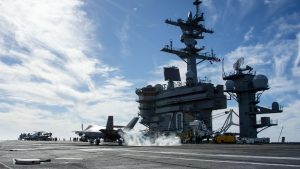
The Navy’s fiscal year 2023 $4 billion unfunded priorities list focuses on adding more missiles, aircraft and spare parts rather than additional ships, according to documents. The service’s top priority is funding industrial operations at $23 million to more quickly convert the remaining 125 early Standard Missile (SM)-6 Block I Non-Combat Usable Asset (NCUA) inventory into combat-ready weapons. The documents noted the SM-6 production line is at maximum capacity across all variants at 125 missiles per year over FY ‘23-’24…

 By
By 











